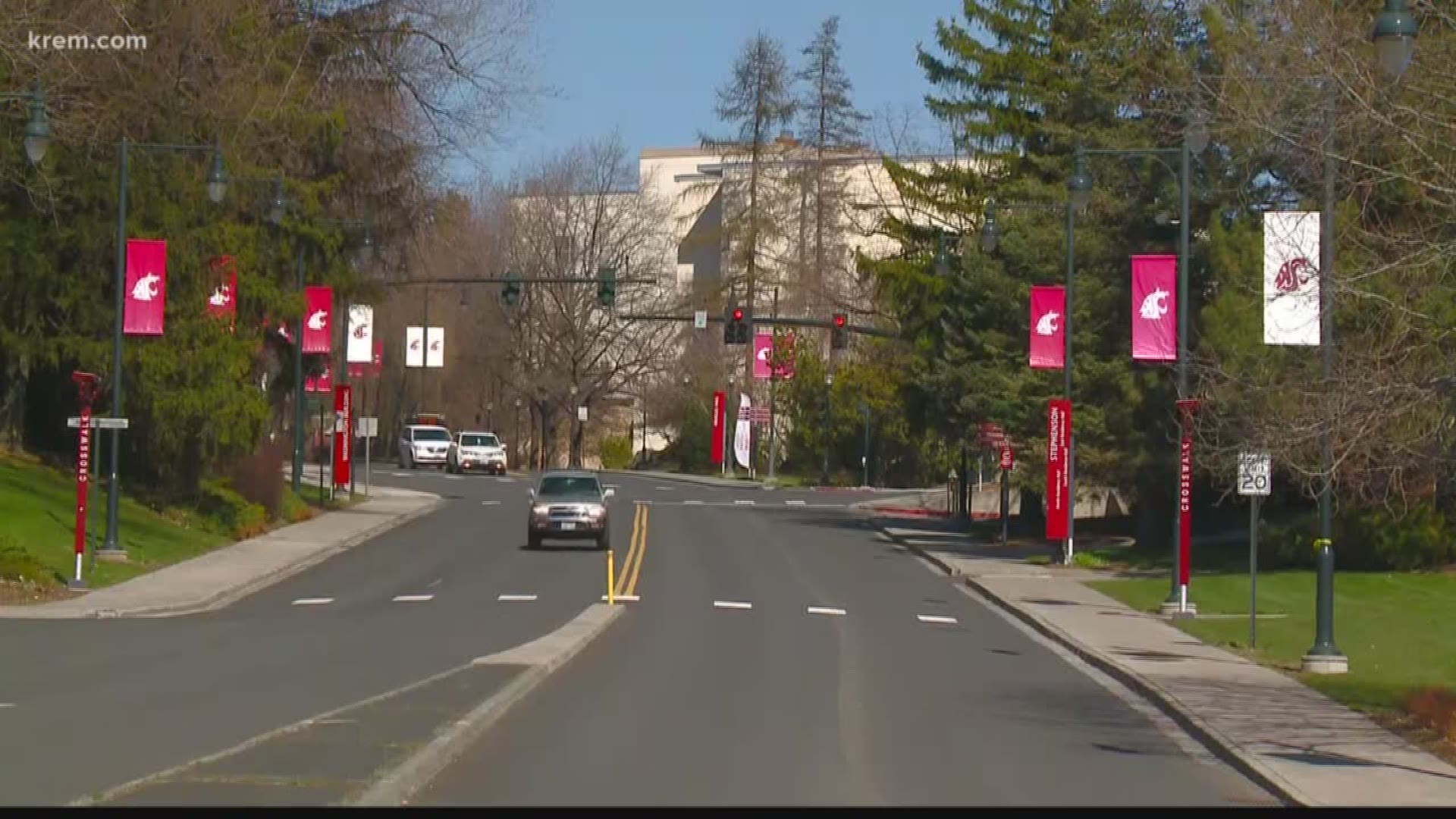PULLMAN, Wash. — Summers in Pullman are unique, as anyone who has visited the city after the first week of May knows it’s kind of a ‘ghost town.’
Most students at Washington State University are from the other side of the mountains in western Washington. While some use summer break to relax, others are already looking ahead to what life in Pullman will look like come fall.
The pandemic has altered life for everyone, as what we once considered normal will likely look a little different. That's the message WSU President Kirk Schulz conveyed in his open letter to the campus community this month.
“I know it has been a frustrating, and for some—extraordinarily difficult—semester. Yet your resolve, and the resolve of our students, to persevere through this pandemic has been exceptional,” Schulz wrote.
Schulz said he’s grateful for the community’s commitment to advance the university’s mission amid the pandemic.
“As I begin to reflect on the current academic year, my thoughts also turn to the longer‑term projects that I did not get to during the spring semester as well as the priorities for fall semester,” he said.
Looking ahead to the fall, Schulz said the university will “deliver the most appropriate instruction that will lead to the best outcomes for all of our students during the fall semester.”
He added that he believes most programs will resume with some form of in‑person instruction.
Several higher education institutions announced similar plans, including Purdue University, the University of Washington, the University of Oregon, and Harvard University.
Schulz admits “these announcements are met with tremendous hope from many students, faculty, and staff—as well as with a healthy dose of skepticism from others.”
While it is not entirely clear what on‑campus environments will look like for the 2020–2021 academic year, Schulz outlined some key themes that give us glimpses of the future reality:
- "Protecting the health and safety of students, faculty, and staff will be of paramount concern as we plan for in‑person operations. As such, we will adhere to established protocols to address employees’ health concerns, including opportunities for alternative work locations and telework. Students with similar concerns will be provided opportunities to participate in online classes. We are committed to providing a safe and inclusive environment for all of our students."
- "Physical distancing will need to be part of our plans for the entire academic year. This will apply to all in‑person activities—inside and outside of the classroom. Additionally, we will continue to adhere to the other best practices recommended by heath experts, including environmental disinfection and frequent handwashing. Our plans will be based on the assumption that a widely available vaccine for the virus will not be available during the academic year."
- "Any plans for on‑campus operations will need to determine the role of protocols for COVID‑19 certification and testing of faculty, staff, and students in accordance with established guidelines while ensuring we address privacy and ethical concerns. Additionally, we will work with our colleagues in higher education across the nation to share best practices for maintaining a safe environment at our campuses."
- "We will need to apply the four‑phase “Smart Start” approach to reopening as outlined by Washington Governor Jay Inslee as we resume more in‑person operations. Our plans must also allow us to flex if, as is likely, the course of the pandemic shifts and the resulting restrictions under which we operate change accordingly."
- "The approach to classroom instruction will need to be flexible to ensure physical distancing and the ability to adapt to individual and community circumstances as the pandemic evolves. I have heard many different ideas discussed by the WSU community that mirror those from my conversations with higher education leaders regionally and nationally. The ideas include “flipped” classrooms with small sections for Q&A, creative scheduling (making use of classrooms and instructional opportunities on Saturdays, Sundays, early mornings, and evenings), and hybrid classes with some instruction online and some instruction in person. Some larger classes may need to be mostly online.As a community of scholars, we need to think creatively about how to synthesize physical distancing and an in‑person instructional environment for both large and small classes. I have asked Interim Provost Bryan Slinker and Vice President for Academic Innovation and Outreach Dave Cillay to lead system‑wide efforts to design ways to create exceptional classroom experiences that accommodate physical distancing and provide flexibility to adapt if circumstances change. The specifics of those solutions will be tailored to meet the needs of individual campuses."
- "Research, scholarship, and creative activity remains a vital component of WSU’s mission. Much of this work is being successfully executed remotely. Our leadership is examining options for ramping up research safely and securely from its current reduced level."
Schultz also briefly addressed financial concerns with the university, saying it’s one of their top concerns.
“While it is still too early to speak with certainty about the financial picture, we will share that information as soon as it is available,” Schultz wrote.
Schultz is looking for suggestions and is asking the community to send them to him at kirk.schultz@wsu.edu.

